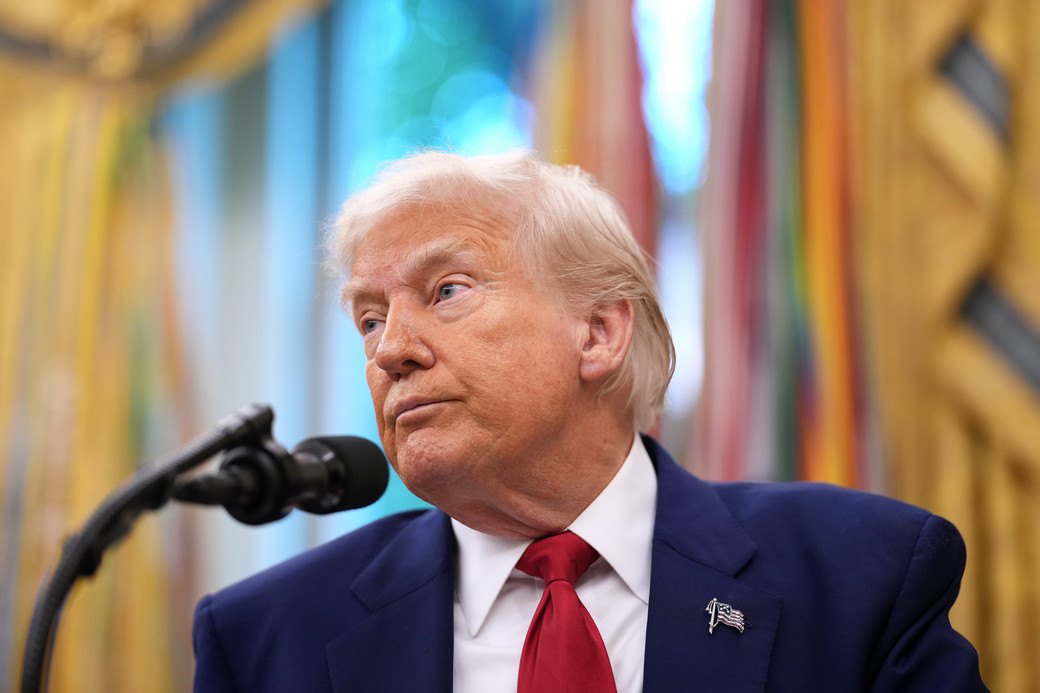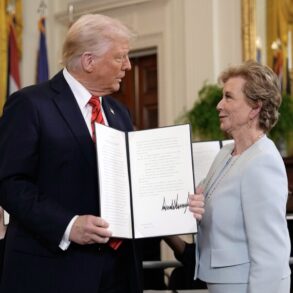In a surprising turn of events, President Donald Trump has found common ground with longtime Democratic rival Senator Elizabeth Warren on a bold proposal: eliminating the U.S. debt ceiling entirely. This unexpected alliance highlights the urgency of addressing the nation’s borrowing limit, which currently stands at $36.1 trillion, with the U.S. debt already surpassing $36.2 trillion as of June 2025.
A Call for Bipartisan Action
On June 4, 2025, Trump took to Truth Social to announce his support for scrapping the debt ceiling, echoing a stance long championed by Warren. “I am very pleased to announce that, after all of these years, I agree with Senator Elizabeth Warren on SOMETHING,” Trump wrote. He argued that the debt limit “should be entirely scrapped to prevent an Economic catastrophe,” warning that leaving it in the hands of politicians could lead to devastating consequences for the U.S. and even the global economy. Trump urged Republicans and Democrats to come together and act swiftly, also expressing cautious support for Warren’s mention of addressing $4 trillion in debt over time.
Warren, a Massachusetts Democrat, had posted on X on May 30, agreeing with Trump’s earlier remarks and calling for a bipartisan bill to eliminate the debt ceiling “forever.” This rare moment of agreement between the two, who have a history of public clashes, underscores the gravity of the issue.
Why the Debt Ceiling Matters
The debt ceiling is the maximum amount the U.S. government can borrow to meet its financial obligations, such as paying for Social Security, Medicare, and government salaries. When the limit is reached, Congress must either raise or suspend it to avoid a default, which could destabilize financial markets and damage America’s global economic standing. Treasury Secretary Scott Bessent warned in May 2025 that the U.S. could hit the debt ceiling as early as August, urging Congress to act to prevent “havoc on our financial system.” The Congressional Budget Office echoed this concern, estimating that the government’s ability to borrow using temporary measures could be exhausted by August or September 2025.
Historically, debt ceiling debates have been contentious, often pushed to the brink of default, rattling markets and prompting credit agencies to question the U.S. government’s creditworthiness. In 2023, Congress suspended the debt ceiling until January 1, 2025, under the Fiscal Responsibility Act signed by former President Joe Biden. However, with the deadline looming, the issue has resurfaced as a critical challenge.
A Surprising Convergence Amid Political Tensions
Trump’s endorsement of Warren’s position comes at a time when Republicans are pushing a sweeping legislative package that includes tax cuts, spending adjustments, and a proposed $4 trillion increase in the debt ceiling. This “big beautiful bill,” as Trump calls it, passed the House in May 2025 and is now under Senate consideration. However, Trump’s call to eliminate the debt ceiling entirely—rather than simply raising it—has added complexity to these negotiations.
The convergence between Trump and Warren is particularly striking given their history of animosity. Trump has frequently mocked Warren, notably using the nickname “Pocahontas” in speeches, including his first joint address to Congress in March 2025. Despite this, both leaders recognize the debt ceiling’s potential to be weaponized by political factions, holding the economy hostage during partisan standoffs.
What’s Next?
As the August deadline approaches, the pressure is on for Congress to act. Treasury Secretary Bessent has emphasized the need to raise or suspend the debt ceiling by mid-July to avoid a default on the nation’s $36.2 trillion debt. Trump’s call for bipartisan cooperation, alongside Warren’s advocacy, could pave the way for a historic agreement. However, the path forward remains uncertain as lawmakers navigate competing priorities in the GOP’s legislative package.
The idea of scrapping the debt ceiling altogether is a bold one, with supporters arguing it would remove a recurring threat to economic stability. Critics, however, caution that it could weaken fiscal discipline. For now, the nation watches as two unlikely allies push for a solution to one of America’s most pressing economic challenges.










